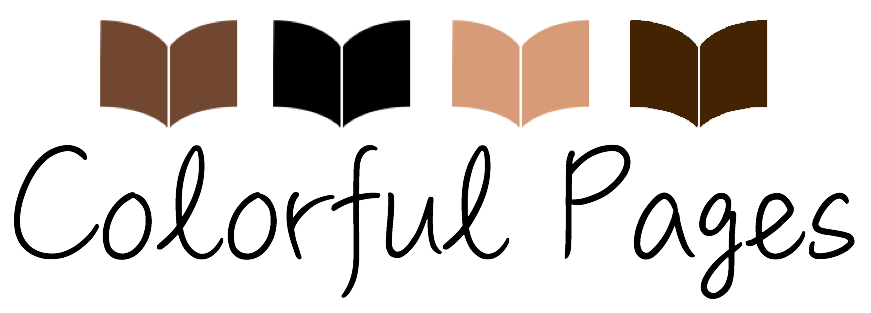To say the last week has been hard would be an understatement. On Tuesday evening, a gunman killed six Asian women and two others in attacks on spas across Atlanta, Georgia. We must call this for what it was: a hate crime and one of the worst forms of racism, murder.
I have been horrified and thrown into a perpetual state of processing since I found out. As a member of our Asian American Pacific Islander Community and an AAPI advocate, I was scared. Many thoughts of “that could’ve been my aunty” or “that could be my community member” ran on repeat in my brain. When my elementary school addressed it at our staff meeting, I was shaking – my usual strength zapped away by how close this hit home.
And, at the same time, frustration was boiling up inside of me. In the last year, there have been almost 3,800 reported cases of racist attacks, AAPI small businesses have closed at a drastic rate, and AAPI workers have been disproportionately affected by this pandemic. Additionally, almost exactly a year ago, I published an article titled “Countering the Racism Against Our Asian Communities: 10 Books Featuring Asian Characters” on Colorful Pages. Yet, here I am again – posting another book list because our community is STILL suffering!

I am incredibly, incredibly grateful for my NEA Asian Pacific Islander Caucus (APIC)! Today, we were able to sit together in community, heal, and process. I have been wanting to write this blog post for the last four days, but I did not have the energy until after our NEA APIC meeting. Mahalo nui loa to all my NEA APIC members for lending me your strength in order to provide more resources! You all have provided the most empowering space I have experienced in my education career.
To help the nation address the anti-AAPI racism and help our community heal, I have created a list of 20 diverse books for educators, families, and librarians to use with your students on our website. There are 10 picture books and 10 young adult novels to address Anti-AAPI Racism, empower our AAPI Community, and provide counternarratives. Each book (besides one) is written by an amazing AAPI author.
Please remember that you have future adults in your classrooms, homes, and libraries. You can have an impact on them and help them challenge anti-AAPI racism. Together, by centering AAPI voices and experiences, we can heal our community!

Picture Books to Address Anti-AAPI Racism
The Name Jar, by Yangsook Choi
The Spectrum for Multicultural Lit.: Conversation
Age Range: 4-8 years old

The Name Jar is a picture book about a little girl named Unhei (Yoon-hey) and her first experience at a school in America. Unhei and her family have just moved to the United States of America from Korea. On her way to her first day of school, a few classmates tease Unhei about her name, so she decides to not tell her class her name and tells them that she will pick a name later. By the end of the book, she is empowered to use her real name and help her classmates pronounce it. This is a good picture book to address Anti-AAPI Racism and Prejudice via names.
The Bracelet, by Yoshiko Uchida
The Spectrum for Multicultural Lit.: Conversation
Age Range: 4-8 years
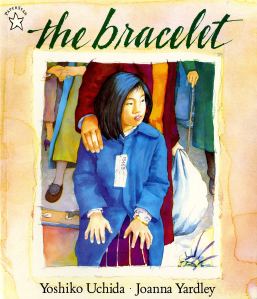
The Bracelet is a picture book about Emi, a seven-year-old, and her family’s experiences being forced to go into a concentration camp, where all Japanese-Americans were ordered to go in the 1940s. Author Yoshiko Uchida uses her own childhood experiences to write this important story. I have used this book to introduce the Internment of Japanese Americans and address the racism that harmed the Japanese-American community during World War II. You can teach students about the historical racism that we need to ensure is never repeated to the AAPI community.
Where Are You From?, by Yamile Saied Méndez
The Spectrum of Multicultural Lit.: Conversation
Age Range: 4-8 years old

This picture book is all about a little girl struggling with the othering and hurtful question she gets from her classmates: “Where are you from?”. In the book, she goes to her abuelo to ask him how to deal with this question and he helps her see the beauty in her heritage and identity. This is a great book to talk about the prejudice (and sometimes racism) that stems from this question and othering of communities of color. While the author does not identify as AAPI, this microaggression (that can turn into racism) affects our AAPI Community heavily (this YouTube video offers a good look at this microaggression for adults: https://www.youtube.com/watch?v=crAv5ttax2I).
Sumi’s First Day of School Ever, by Soyung Pak
The Spectrum of Multicultural Lit.: Conversation
Age Range: 4-8 years old
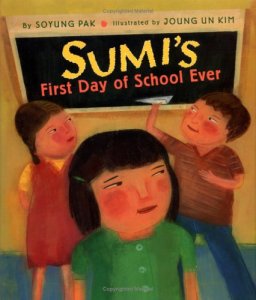
Sumi’s First Day of School is about Sumi, a young Korean girl, and her first day at her new school. She does not know what to think about school at first, but then quickly develops a negative idea about school after experiencing some mean classmates and scary things. Sumi experiences some racial discrimination and racism from her classmates in the beginning. However, by the end, she realizes school can actually be a good place. This book would be great to talk with students about anti-AAPI racism in the school setting and brainstorm ways to make your school or education setting more inclusive and anti-racist.
Picture Books to Empower Our AAPI Community & Act as Counternarratives
Eyes That Kiss in the Corners, by Joanna Ho
The Spectrum for Multicultural Lit.: Exploration
Age Range: 4-8 years old
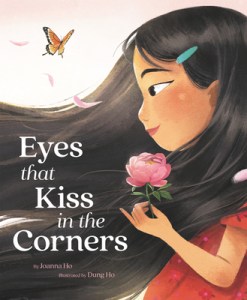
Joanna Ho wrote this beautiful picture book about being proud of one’s identity and appearance. The young Asian girl in the book shares her self-love and love for her family’s heritage and appearances. Her appreciation is absolutely contagious! This picture book would simultaneously empower Asian readers while also acting as a counternarrative for other readers.
Amy Wu and the Patchwork Dragon, by Kat Zhang
The Spectrum for Multicultural Lit.: Exploration
Age Range: 4-8 years old
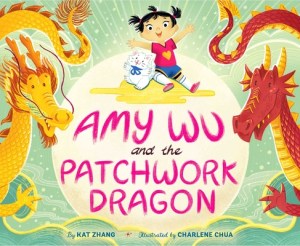
I fell in love with Amy in Amy Wu and the Perfect Bao and now she’s back! In this picture book, Amy’s class is asked to make dragons during craft time. However, when Amy draws a long, wingless dragon, her friends question if that is even a real dragon. Drawing dragons just like her friends does not feel right to Amy though. So, Amy goes home and her grandmother tries to help her find some inspiration to make her dragon. Amy Wu and the Patchwork Dragon is an amazing book that depicts the main character sharing elements from her culture and pushing back on what the dominant culture dictates.
David Jumps In, by Alan Woo
The Spectrum for Multicultural Lit.: Mostly Exploration
Age Range: 4-7 years
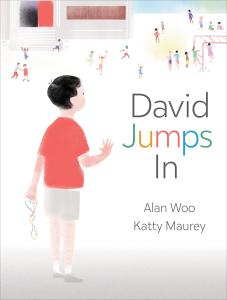
In this picture book, Alan Woo writes about David’s first day at his new school. He does not know anyone and he does not know who to play with. However, at recess, David is ready to make friends with a game called Elastic Skip, which has roots in ancient China. Woo’s book is great to talk about diversity and inclusion within school.
Ordinary Ohana, by Lee Cataluna
The Spectrum for Multicultural Lit.: Exploration
Age Range: 4-7 years

Everyone who has seen me present knows that this is my favorite book because of how empowering it is to my own Native Hawaiian identity! Ordinary Ohana follows a little boy named Kainoa as he introduces all the members of his family. He talks about his family’s culture and Hawaiian family traditions. The illustrations by Cheyne Gallarde are also very endearing.
We Are Inspiring: The Stories of 32 Inspirational Asian American Women, by Angel Trazo
The Spectrum for Multicultural Lit.: Dependent on the Biography
Age Range: 6-8 years
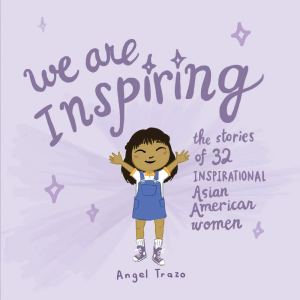
Angel Trazo wrote this book after seeing the lack of literature representing Asian Americans! We Are Inspiring shares the stories of 32 Asian-American women and what they did in our world. I loved the diversity in the Asian-American women she included in this book. Trazo definitely paid attention to acknowledging the wide-breadth of identities in the Asian-American community! Use this book to learn about many different Asian-American women and provide counternarratives for your students and/or children.
Asian-Americans Who Inspire Us, by Analiza Quiroz Wolf
The Spectrum for Multicultural Lit.: Dependent on the Chapter
Age Range: 4+ years old
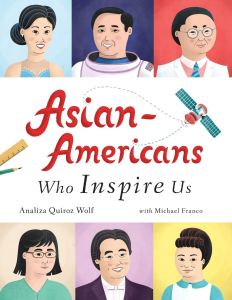
Asian-Americans Who Inspire Us is a picture book that tells the story of 16 Asian-Americans who are trailblazers in history. Each chapter features the biography of a hero accompanied by beautiful illustrations of their life. I used this eBook to read to my students so they can learn about important Asian-Americans for AAPI Heritage Month! You can use this book to help your students learn snippets of Asian-American History and provide counternarratives.
Young Adult Books to Address Anti-AAPI Racism
American Born Chinese, by Gene Luen Yang
The Spectrum for Multicultural Lit.: Conversation
Age Range: Young Adult +

American Born Chinese is a deep, page-turning young adult graphic novel! It engages in the most relatable human dilemma: the need to fit in. Gene Luen Yang manages to tell three storylines: Jin Wang who starts at a new school and struggles when a boy from Taiwan joins too; Danny who is an all-American boy visited by his obnoxious Chinese cousin; and the Monkey King who is trying to find his place in heaven. You can either read this book with your class or pull out a chapter to discuss together around anti-AAPI Racism and xenophobia.
Escape to Gold Mountain: A Graphic History of the Chinese in North America, by David H.T. Wong
The Spectrum for Multicultural Lit.: Conversation
Age Range: 12+ years
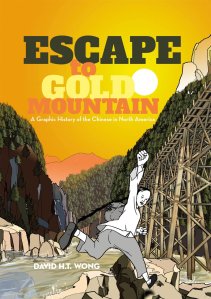
Escape to Gold Mountain is another great graphic novel about AAPI history and the AAPI experience in America! The novel follows the fictional (but representative) Wong family as they immigrate from China to America and assimilate over 150 years. It delves into discrimination, racism, and other complex issues of the immigrant experience rooted in history. Use this graphic novel to teach about AAPI history and address the racism the AAPI community has faced throughout US History.
They Called Us Enemy, by George Takei, Justin Eisinger, Steven Scott, & Harmony Becker
The Spectrum for Multicultural Lit.: Conversation
Age Range: 12+ years
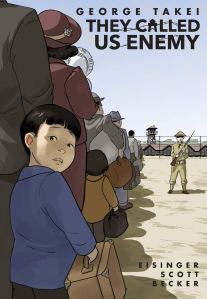
They Called Us Enemy is George Takei’s memoir of his childhood experiences during World War II. Takei and his family were forced into concentration camps as Japanese-Americans were ordered to be imprisoned. This graphic novel is incredibly engaging and can be used to have many conversations around this period of AAPI history and the racism that should never be repeated.
This Time Will Be Different, by Misa Sugiura
The Spectrum for Multicultural Lit.: Conversation
Age Range: Young Adult +
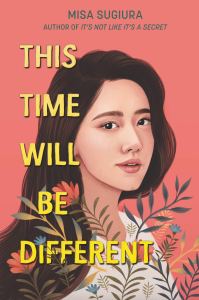
Misa Sugiura has written some really conversational novels, including This Time Will Be Different. In this young adult novel, CJ Katsuyama, a Japanese-American teenager, helps out at her family’s flower shop until her mother decides to sell it to a family who made money from the Internment of Japanese Americans in the 1940s. Any reader of this book will grow as they see CJ navigate racism, homophobia, intergenerational trauma, and family conflict.
Almost American Girl: An Illustrated Memoir, by Robin Ha
The Spectrum for Multicultural Lit.: Conversation
Age Range: 13-17 years

Almost American Girl is a graphic novel memoir about Robin, a teenager whose mom unexpectedly uproots them from Seoul, Korea in order to marry and move to Alabama. Robin experiences a lot of hardships as she transfers to a new school where she does not know the language (with no access to ESL classes) and tries to find her place in her new stepfamily. Robin Ha, the author, details real experiences that shine light on the racism and xenophobia many AAPI community members face, especially while immigrating to the US.
Young Adult Books to Empower Our AAPI Community & Act as Counternarratives
The Snake Dance of Asian American Activism: Community, Vision, & Power, by Michael Liu, Kim Geron, and Tracy Lai
The Spectrum for Multicultural Lit.: Conversation
Age Range: Young Adult

The Snake Dance of Asian American Activism was recommended to me when I was taking a course on the Asian Pacific American experience in the Pacific Northwest. Liu, Geron, and Lai write about the Asian American Movement and its impact on the equality and inclusion of Asian Americans. This novel challenges the “model minority” stereotype that is harmful for our communities.
American Panda, by Gloria Chao
The Spectrum for Multicultural Lit.: Mostly Exploration
Age Range: 12+ years

In this young adult novel, Mei struggles with her parents’ predetermined plan for her life. They want her to become a doctor, marry a Tawainese man, and have children. However, so many aspects of their plan go against Mei’s desires (and germophobia). American Panda is a coming-of-age novel that also explores what it means to be Tawainese-American. It is a fun read that can serve to empower or act as a mirror to AAPI readers while also providing another counternarrative.
Patron Saints of Nothing, by Randy Ribay
The Spectrum for Multicultural Lit.: Conversation
Age Range: 12-17 years

Patron Saints of Nothing by Randy Ribay follows Jay Reguero, a half-Filipino and half-White teenage boy, who travels to the Philippines in order to find out the real story behind his cousin’s death. This young adult novel tackles family, trauma, identity, faith, and Philippines President Duerte’s War on Drugs. The author carefully builds a multi-layered conflict that readers will not be able to put down. Plus, look at that beautiful cover art! Patron Saints of Nothing would be empowering to AAPI readers and act as a counternarrative by uplifting the story from one part of our AAPI community.
Between the Deep Blue Sea and Me, by Lurline Wailana McGregor
The Spectrum for Multicultural Lit.: Between Exploration & Conversation
Age Range: Young Adult +
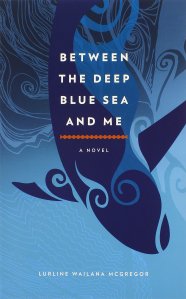
Between the Deep Blue Sea and Me is a young adult novel about Moana Kawelo who has a glamorous life in California. However, when her father suddenly passes away, she is brought back to her home in Hawai’i. Moana struggles to find her identity in Hawai’i and questions her success on the Mainland.
The Magic Fish, by Trung Le Nguyen
The Spectrum for Multicultural Lit.: Mostly Exploration
Age Range: 12-17 years
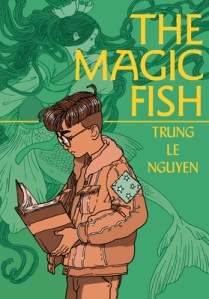
In this captivating young adult novel, Trung Le Nguyen shares the life of Tiến, a young Vietanmese boy who uses fairy tales to navigate life, connect with his parents while they struggle with English, and bring people together. Tiến is also struggling with coming out to his parents. Trung Le Nguyen’s illustrations are breathtaking and he seamlessly weaves through the different stories and panels.
Other Resources to Take Action
It is a great first step to address anti-AAPI racism and empower our AAPI community within your school, family, and/or library. Please check out these other resources to continue to take action:
- Sign on to our collective community statement: bit.ly/aaajcommunitystatement
- Donate to support the victims and their families: bit.ly/DonateToGeorgiaAAPICommunity
- Check out the NEA Asian Pacific Islander Caucus’s Resources: https://nea-apic.com/aapi-resources/
—
My deepest condolences to the families of Xiaojie Tan, Daoyou Feng, Soon Chung Park, Hyun Jung Kim Grant, Delaina Ashley Yaun, Sun Cha Kim, Yong Ae Yue, and Paul Andre Michels. They will not be forgotten and we will not stop advocating until our AAPI community is healed and supported ❤️
